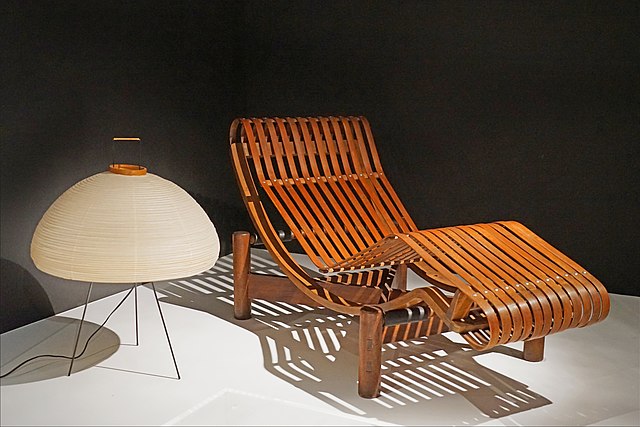 Image courtesy of Wikimedia Commons
Image courtesy of Wikimedia Commons
The Hidden Roots of Modern Style
Walk through any contemporary design fair from Milan to Miami and you’ll spot echoes of Bauhaus geometry, Scandinavian minimalism, or Japanese restraint. But look closer, and you’ll see something more subtle: the ghost of France.
Long before “modern design” became a global aesthetic, a generation of French artists and craftsmen laid its emotional and conceptual foundation. Their names, often overshadowed by Le Corbusier, Mies van der Rohe, or Gropius — rarely appear in design textbooks. Yet their influence is everywhere: in the curve of a chair, the rhythm of a typeface, the harmony between utility and beauty.
These are the forgotten French artists who shaped modern design — and whose rediscovery feels long overdue.
Suzanne Lalique: The Quiet Modernist
Suzanne Lalique, the daughter of the famed glassmaker René Lalique, was one of the first women to blur the line between art and industry. In the 1920s and ’30s, she designed stage sets for the Comédie-Française, porcelain for Limoges, and tableware for her father’s atelier.
Where her father celebrated opulence, Suzanne pursued restraint. Her motifs, which included feathers, leaves, stylized flowers were pared down to elegant essentials, anticipating the ligne claire that would define mid-century modernism.
“She had an innate understanding of what we now call visual branding,” says curator Béatrice Salmon of the Musée des Arts Décoratifs. “Her designs were modern before modernism had a manifesto.”
Today, her influence can be seen in everything from minimalist ceramics to the organic curves of Scandinavian furniture, proof that modern design’s clean lines were born not only in Germany, but also in French Art Deco salons.
Jean Dunand: The Metal Magician
Jean Dunand (1877–1942) was both artist and alchemist. A Swiss-born naturalized Frenchman, he mastered the ancient technique of laque Japanese lacquerwork and reinvented it for the machine age. His screens, vases, and panels shimmered with metallic pigments, geometric abstraction, and sculptural form.
Dunand collaborated with architects, designers, and couturiers including Paul Poiret bridging art, fashion, and interior design. His lacquer panels once adorned the smoking room of the ocean liner Normandie, one of the most luxurious vessels ever built.
His aesthetic sensual minimalism meeting industrial glamour anticipated what we now call luxury modernism. Yet Dunand’s name vanished from popular memory, eclipsed by the architects he inspired.
Only in recent years, with renewed interest in Art Deco as proto-modernism, has his genius resurfaced. “He understood something crucial,” notes design historian Stéphane Laurent. “That the future of decoration lay in its disappearance — in form becoming structure.”
Sonia Delaunay: The Poet of Color
Few artists bridged fine art and applied design as seamlessly as Sonia Delaunay (1885–1979). Though born in Ukraine, she made Paris her creative home — and transformed color into movement.
Her “Simultaneous” designs which feature rhythmic compositions of vibrant hues were not confined to canvas. She painted textiles, designed dresses, created carpets, book covers, even car upholstery. For Delaunay, modern life itself was a canvas: cars, clothes, and interiors all pulsing to the same chromatic rhythm.
In doing so, she became one of the first true interdisciplinary designers, anticipating today’s fusion of art and lifestyle.
Her influence on modern graphic design and fashion is immense: Yves Saint Laurent, Hermès, and even Apple’s design language owe her a debt. And yet, for decades, she was known primarily as “Robert Delaunay’s wife.” Only recently has the art world recognized her as the innovator she was: a bridge between abstraction and everyday life.
Charlotte Perriand: The Designer Who Humanized Modernism
No list of forgotten French innovators would be complete without Charlotte Perriand (1903–1999), whose partnership with Le Corbusier was both brilliant and fraught. Perriand was the mind behind much of the furniture that made Corbusier’s interiors famous — the tubular steel chairs, the functionalist layouts, the human-scaled proportions.
But where Le Corbusier saw the home as a “machine for living,” Perriand saw it as an ecosystem for human well-being. After traveling to Japan in the 1940s, she blended modernist logic with natural materials and cultural humility.
Her later work with bamboo, wood, and woven textures prefigured today’s sustainable design movement. Yet her contributions were long credited to her male collaborators. “She anticipated the entire philosophy of 21st-century design,” says design writer Alice Rawsthorn. “Functional, emotional, ecological — and quietly revolutionary.”
Rediscovering a Lost Continuum
What ties these figures together isn’t just geography or chronology — it’s a shared belief that design should reconcile modern life with human feeling. They were not industrialists or ideologues, but poets of form.
Their works bridged the decorative and the utilitarian, the artisanal and the industrial — and in doing so, they laid the groundwork for how we live with objects today.
To rediscover them is to restore balance to the story of modernism — to remember that while the German Bauhaus gave modern design its grammar, it was often the French who gave it its grace.
The Modern Eye, Reframed
In the age of algorithmic aesthetics and AI-generated imagery, these forgotten French artists offer a valuable reminder: design is not only about progress, but about presence.
Their work whispers across time, in the curve of a vase, the fold of a chair, the pulse of a color that modernity, at its best, is not a break from tradition, but its evolution.
And as museums and collectors begin to revive their legacies, France’s lost modernists are finally reclaiming their place in the story they helped write: the story of how beauty became modern.